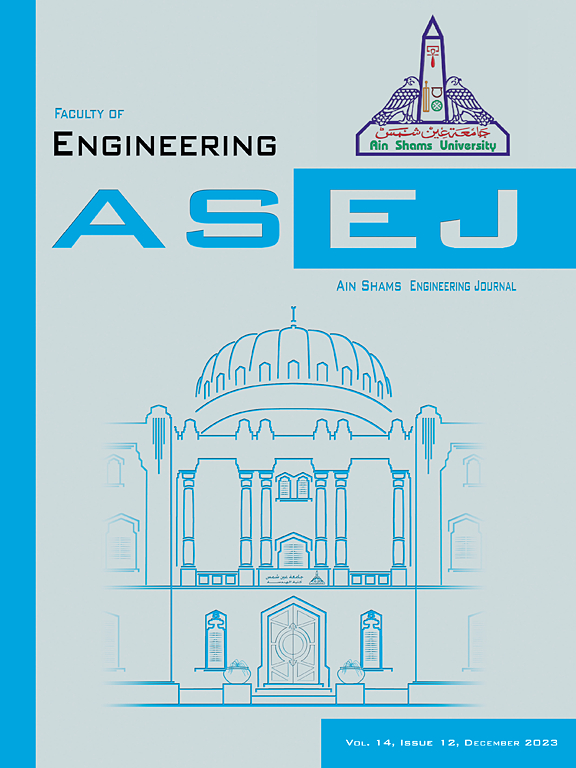A swin transformer-driven framework for gesture recognition to assist hearing impaired people by integrating deep learning with secretary bird optimization algorithm
IF 6
2区 工程技术
Q1 ENGINEERING, MULTIDISCIPLINARY
引用次数: 0
Abstract
Hand gestures (HG) are the key communication technique for hearing-impaired people, which poses a problem for millions of individuals globally after communicating with those who don’t have hearing impairments. The importance of technology in improving accessibility and thus raising the standard of living for persons with hearing impairments is globally acclaimed. Machine learning (ML) is a section of artificial intelligence (AI) that concentrates on developing a method that depends on data. The major problem of HG recognition is that the machine does not identify the human language straightforwardly, and human–machine interaction is required of media for communication, which is determined by machines and, in addition to humans, to assist hearing-impaired individuals and ageing people. Thus, HG recognition as a communication media is necessary to provide instructions to the computer. This paper proposes the Swin Transformer-Driven Framework for Gesture Recognition by Integrating Deep Learning with the Secretary Bird Optimization (STFGR-IDLSBO) methodology. The main intention of the STFGR-IDLSBO methodology is to develop an efficient and robust system for gesture recognition to assist hearing-impaired persons. Initially, the proposed STFGR-IDLSBO method utilizes adaptive bilateral filtering (ABF) in the image pre-processing stage to reduce noise while preserving the edges of the gestures in the captured images. Furthermore, the swin transformer (ST) is a feature extractor that effectively captures multiscale representations and spatial hierarchies from gesture images. The hybrid model integrates the convolutional neural network and bi-directional long short-term memory (CNN-BiLSTM) technique, which is employed for the gesture classification process. Finally, the secretary bird optimizer algorithm (SBOA) is utilized for the optimum hyperparameter tuning of the CNN-BiLSTM classifier. To ensure the enhanced performance of the STFGR-IDLSBO methodology, a wide range simulation investigation is performed under the Traffic Police Gesture dataset. The performance validation of the STFGR-IDLSBO technique portrayed a superior accuracy value of 99.25% over existing methods.
一种结合深度学习和秘书鸟优化算法的天鹅变压器驱动的手势识别框架,以帮助听障人士
手势(HG)是听力障碍人士的主要交流技巧,这给全球数百万人在与非听力障碍人士交流时带来了问题。技术在改善无障碍环境,从而提高听障人士生活水平方面的重要性已得到全球认可。机器学习(ML)是人工智能(AI)的一个分支,专注于开发一种依赖于数据的方法。桓语识别的主要问题是机器不能直接识别人类语言,需要人机交互的交流媒介,这是由机器决定的,除了人类之外,还可以帮助听障人士和老年人。因此,桓语识别作为向计算机提供指令的通信媒体是必要的。本文提出了将深度学习与秘书鸟优化(STFGR-IDLSBO)方法相结合的Swin变换器驱动手势识别框架。STFGR-IDLSBO方法的主要意图是开发一种高效、稳健的手势识别系统,以帮助听障人士。首先,拟议的 STFGR-IDLSBO 方法在图像预处理阶段利用自适应双边滤波(ABF)来减少噪声,同时保留捕获图像中手势的边缘。此外,斯温变换器(ST)是一种特征提取器,能有效捕捉手势图像中的多尺度表示和空间层次。混合模型集成了卷积神经网络和双向长短期记忆(CNN-BiLSTM)技术,用于手势分类过程。最后,利用秘书鸟优化算法(SBOA)对 CNN-BiLSTM 分类器的超参数进行优化调整。为确保 STFGR-IDLSBO 方法的性能得到提升,我们在交警手势数据集下进行了广泛的模拟调查。通过性能验证,STFGR-IDLSBO 技术的准确率达到 99.25%,优于现有方法。
本文章由计算机程序翻译,如有差异,请以英文原文为准。
求助全文
约1分钟内获得全文
求助全文
来源期刊

Ain Shams Engineering Journal
Engineering-General Engineering
CiteScore
10.80
自引率
13.30%
发文量
441
审稿时长
49 weeks
期刊介绍:
in Shams Engineering Journal is an international journal devoted to publication of peer reviewed original high-quality research papers and review papers in both traditional topics and those of emerging science and technology. Areas of both theoretical and fundamental interest as well as those concerning industrial applications, emerging instrumental techniques and those which have some practical application to an aspect of human endeavor, such as the preservation of the environment, health, waste disposal are welcome. The overall focus is on original and rigorous scientific research results which have generic significance.
Ain Shams Engineering Journal focuses upon aspects of mechanical engineering, electrical engineering, civil engineering, chemical engineering, petroleum engineering, environmental engineering, architectural and urban planning engineering. Papers in which knowledge from other disciplines is integrated with engineering are especially welcome like nanotechnology, material sciences, and computational methods as well as applied basic sciences: engineering mathematics, physics and chemistry.
 求助内容:
求助内容: 应助结果提醒方式:
应助结果提醒方式:


